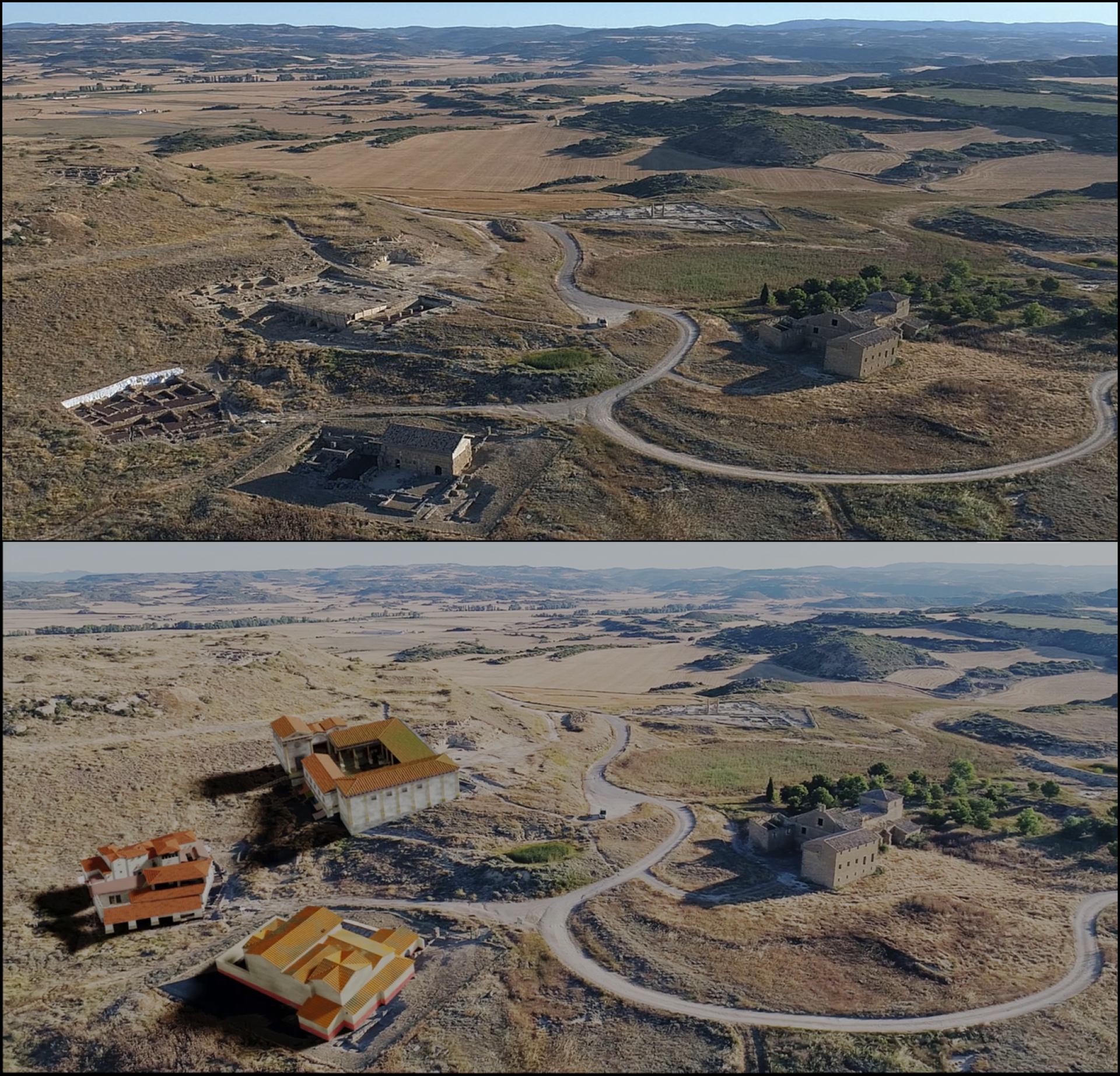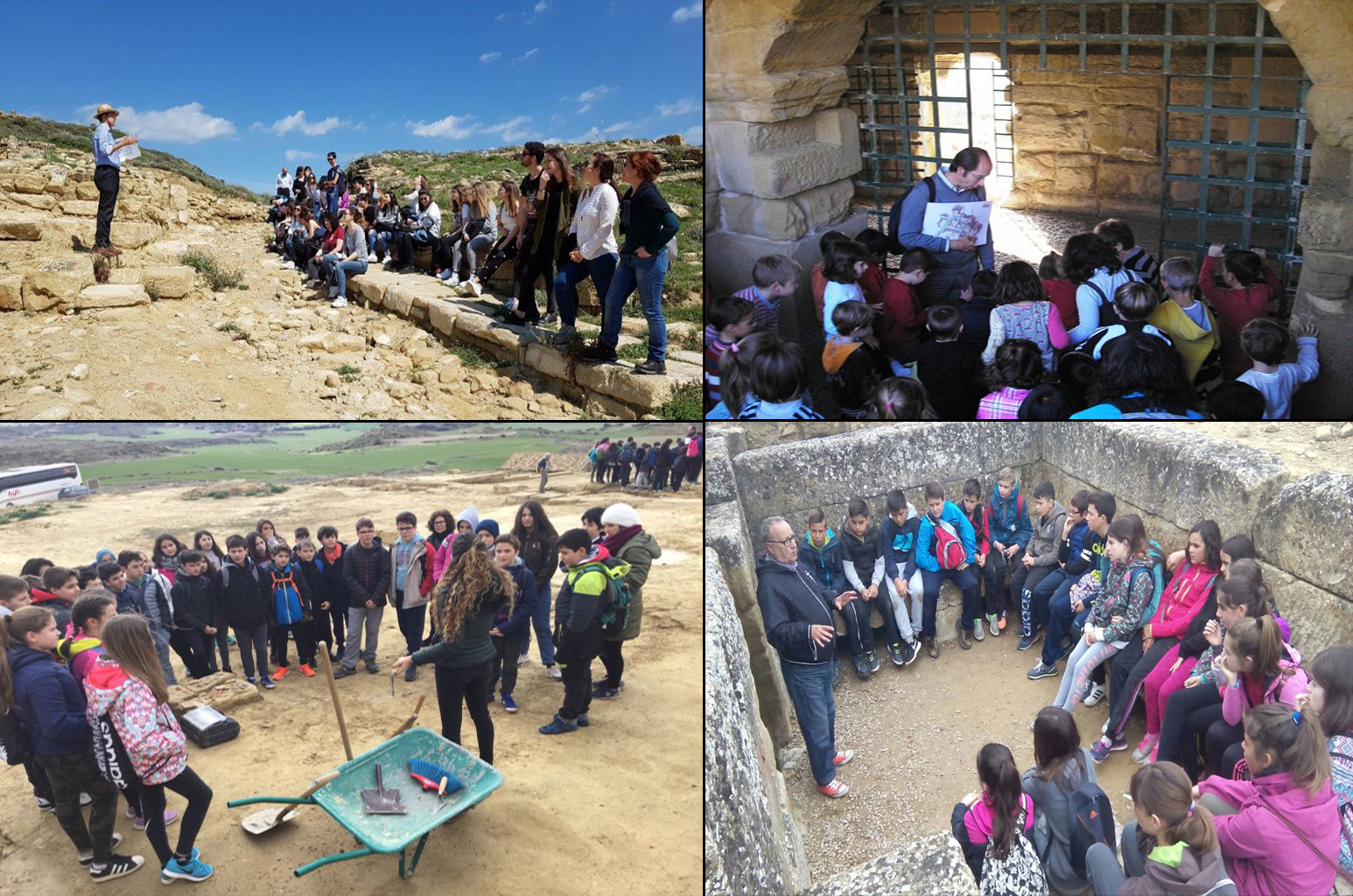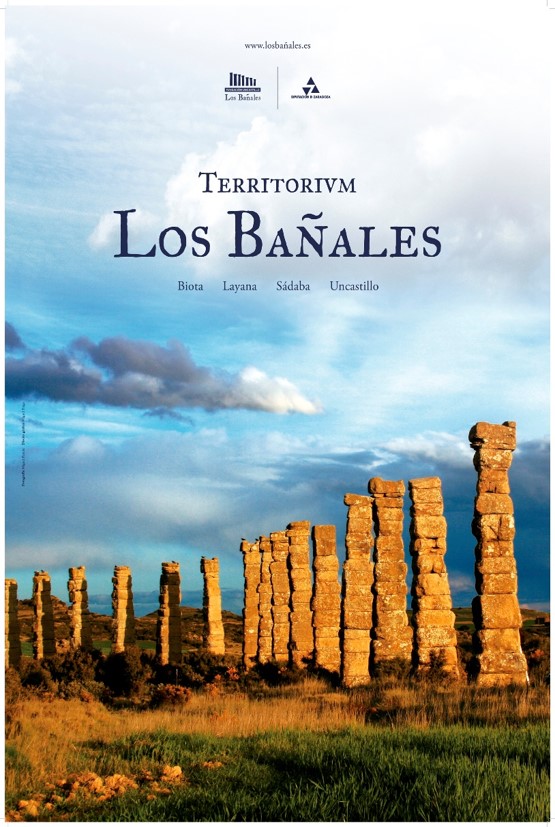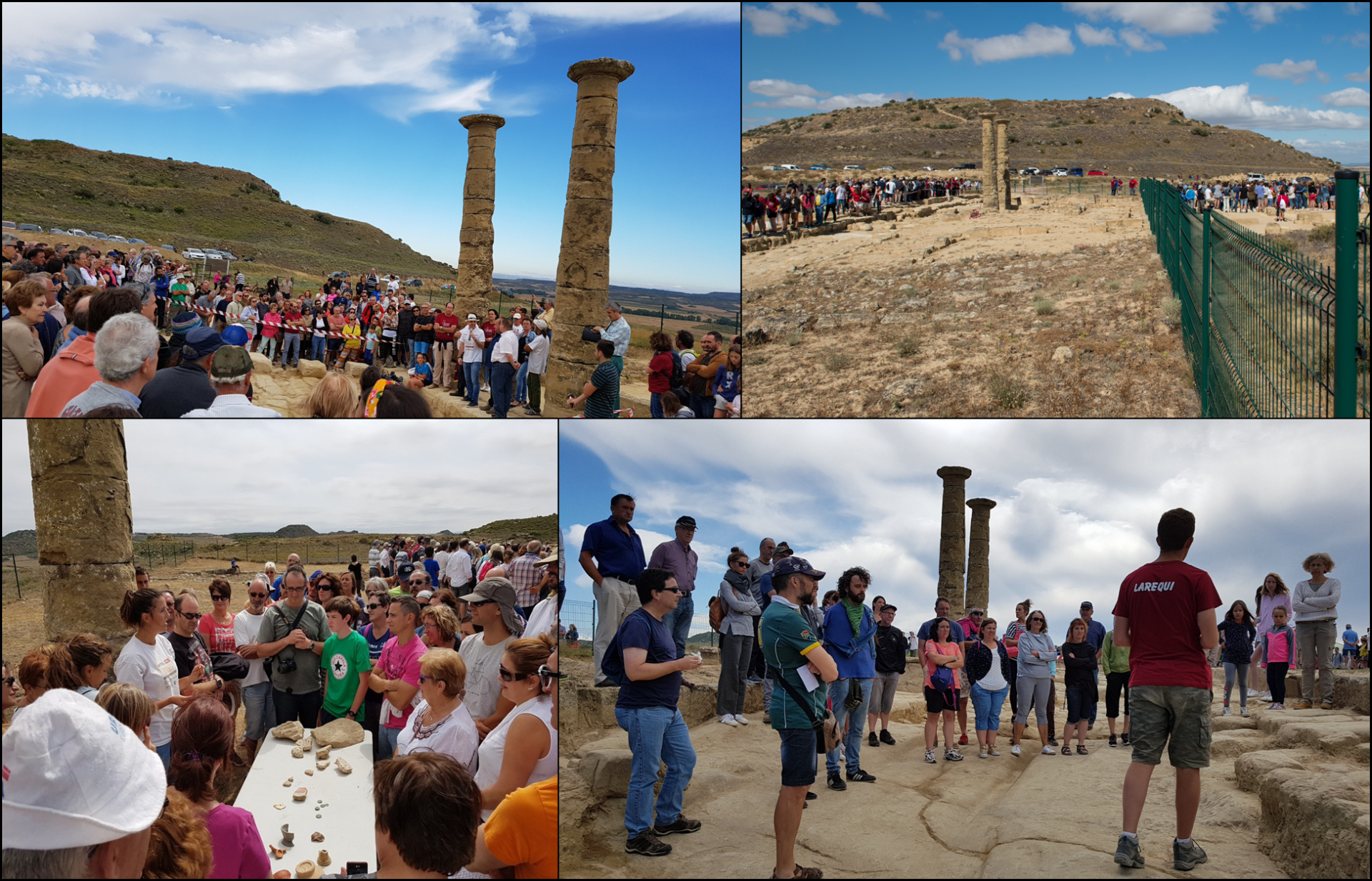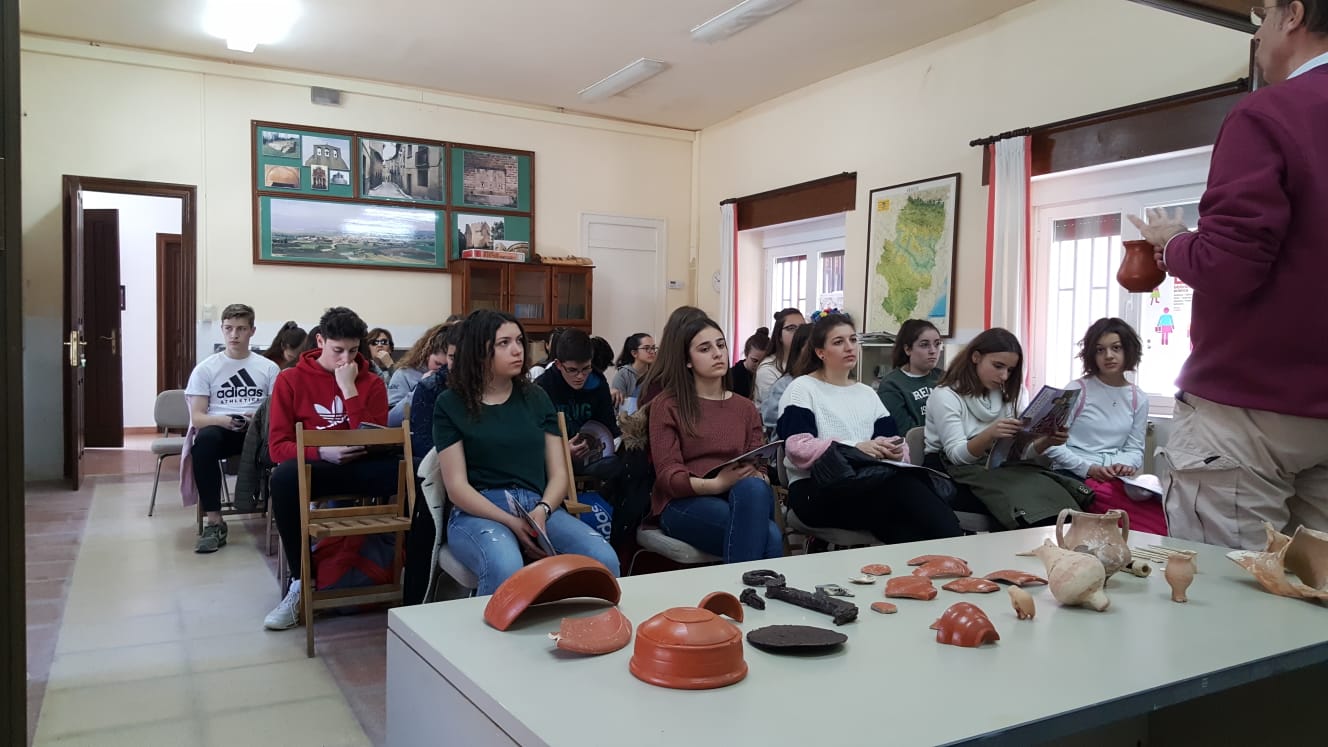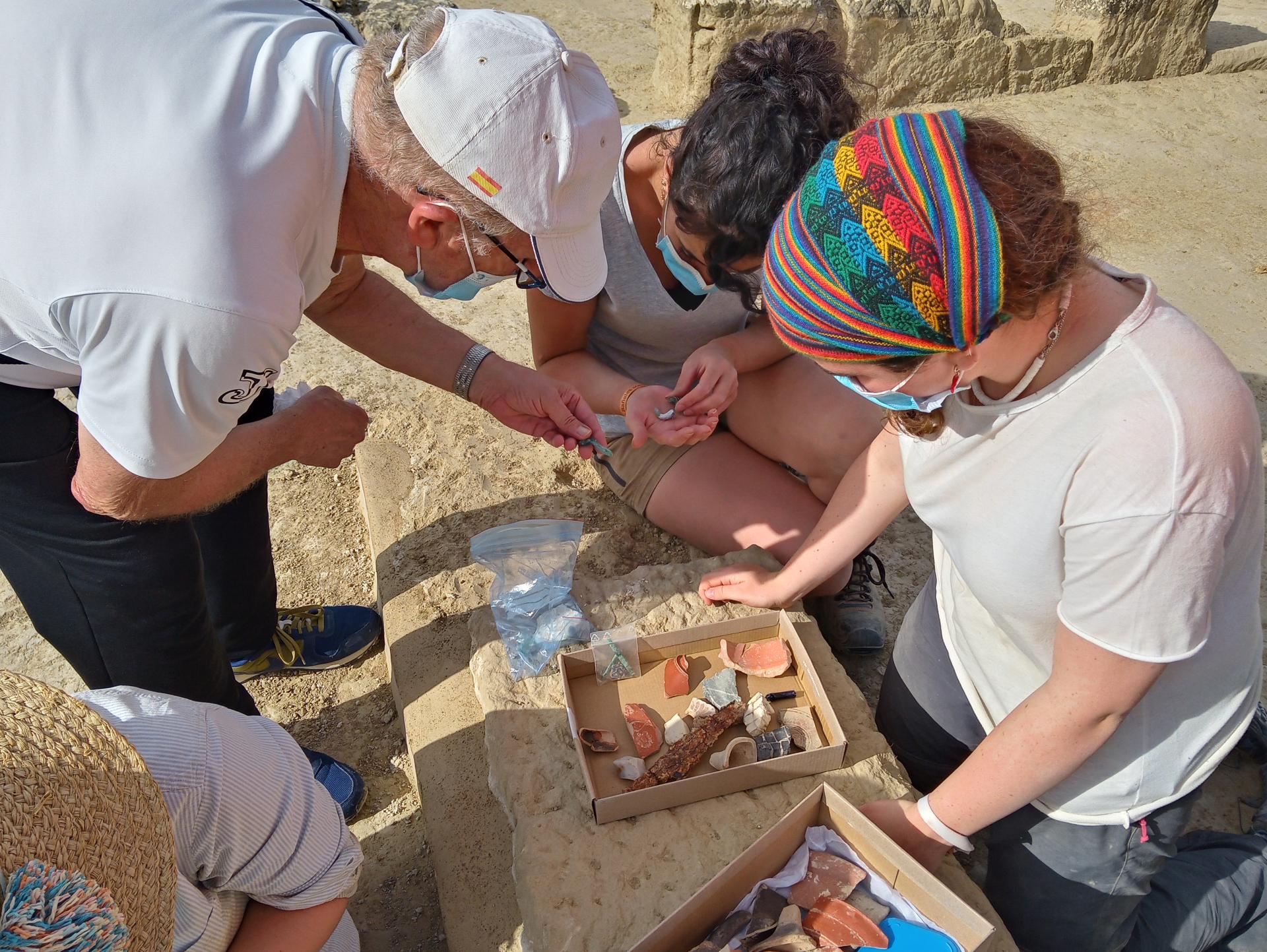Roman city Los Bañales true proprietors
Basic information
Project Title
Full project title
Category
Project Description
The area of "Los Bañales" (Uncastillo, Zaragoza, Spain), hosted a spectacular city in the Roman period, later in ruins, that during the Middle Ages remained a space for the preservation of local memory and of pilgrimage. In the years prior to the pandemic (2018 to 2020) and with the collaboration of students from the University of Navarra, a project of recovery and socialization was developed that has turned the archaeological site into a space of identity, visited and culturally managed.
Geographical Scope
Project Region
Urban or rural issues
Physical or other transformations
EU Programme or fund
Which funds
Description of the project
Summary
The Roman city of Los Bañales de Uncastillo (Spain) (Ist c. BC-IIIrd c. AD), with the remains of a hydraulic system, baths, forum and handcraft and residential districts, is one of the best examples of ancient Roman urban planning in northern Spain. The site was the object of archaeological excavation in the 40's and 70's of the 20th century by distinguished archaeologists and was later abandoned for research and for society. However, during the centuries of Romanization, and also later, when its ruins were Christianized with the installation of a chapel to Holy Mary of Los Bañales, they were a neuralgic meeting center of regional identity as historical sources reveal.
Especially in 2018-2020 and within the framework of a global archaeological project of study and restoration/adaptation of its remains, from the University of Navarra, in collaboration with the Fundación Uncastillo, various tools have been put in place to facilitate the involvement of the territory and its population in the research activities, to turn the space into an identifying element perceived as belonging to everyone by the community, even transcending the municipality of Uncastillo itself and generating a real regional identity, while investing in the recovery of an artistic and archaeological heritage that can offer, and already offers, in fact, a possibility of tourist and economic development to a depressed, unpopulated and essentially agricultural environment. The flow and collaboration between academics and the local population (both adults and schoolchildren of the area far from the scientific circuit) has generated a synergy of cooperation that has undoubtedly facilitated inclusion, the recovery of the beauty of the Roman past and the use of it as a sustainable resource for rural development and territorial promotion, being today one of the most dynamic archaeological projects and one of the most visited archaeological sites in the country receiving more than 4,000 visitors every year.
Key objectives for sustainability
The Roman city of Los Bañales is located in the municipality of Uncastillo (650 inhabitants) although it is surrounded by Layana (80), Sádaba (1320) and Biota (1090), agricultural localities separated from schools and universities and with no important company onsite. The research and enhancement of the site offers an opportunity for the cultural, tourist and economic development of a depressed area.
Thus, the pursued objectives on sustainability have turned the archaeological site into a driving force for local development by promoting tourism (attending guided tours) and recovering heritage to provide a real resource for the population; to raise the cultural level and the social opportunities of the population through the socialization of the scientific activity carried out at the site (talks, conferences, workshops, seminars, etc.) and its implication in the archaeological works together with university students; the implementation of a learning/service model whereby university students collaborate with the local social and economic ecosystem to provide a service that improves local communities’ opportunities to improve its culture bringing science closer to society. In addition, we have worked on stimulating public institutions in the area to cooperate financially to the project through grants, subsidies, etc. Today, the town councils of the aforementioned localities and the regional political entity, Comarca de Cinco Villas together with some private companies of the area, allocate sums in their annual budgets to promote this project in what constitutes a unique case of convergence of several municipalities around an archaeological project located in only one of them.
To remark, one of the virtues of the project has been the maximum return obtained from the funds received, never exceeding €30,000 per year in investment, through a network of cultural volunteers in which the involvement of the local population has been key.
Key objectives for aesthetics and quality
From its origins, Archaeology has contributed to the recovery of the material culture of past societies, turning them into an object of aesthetic contemplation and a source of linking the past with of our societies. Recently, the so-called landscape Archaeology has contributed to the recovery of environments endowed with their own historical flavor.
The archaeological work at Los Bañales has provided a good and unique repertoire of ancient objects that have been brought closer to the local populations through exhibitions and workshops -with special attention to the school public- but also through a large virtual 3D repository that collects some of these materials for making people possible to visit. The participation of students and researchers in bringing the population closer to this heritage has undoubtedly brought the beauty of the classical world to a population far removed from this type of cultural perception. The design, in this sense, of abundant cultural and pedagogical mediation tools to bring this cultural heritage closer to the population and their families has been a key-tool in this sense. Similarly, the application of new technologies, in particular augmented reality, has also allowed the aesthetic contemplation of the ancient Roman city by the public to become a reality by including it by QR codes into the site.
Moreover, the correspondence between the area legally controlled by the Romans from Los Bañales and the one belonging to the municipalities involved and surrounding areas has made it possible to claim the "territorium" Los Bañales as a cultural landscape of facing with History that can claim the survival of tangible and intangible heritage values typical of the traditional societies.
The model, from the point of view of its tools and procedures, is perfectly exemplar and, in fact, it is being adapted to another Roman city, Santa Criz de Eslava (www.santacrizdeeslava.com), with the collaboration, also, of the University of Navarra.
Key objectives for inclusion
After the archaeological experiences in the Roman city of Los Bañales carried out in the central decades of the XXth century, the surrounding society had lost faith in the possibilities of the archaeological site as a heritage resource. The peripheral position of the site with respect to the urban centers of the surrounding municipalities did not help in the protection of its remains. It was also abandoned, frequently plundered and its ruins threatened to be forgotten. One of the main and first objectives of our project was to encourage tools to culturally manage the site as a way to give it life, give it dynamism and make it again a cultural center for the region involving on that the local and rural population.
Thus, we have sought at all times to involve the citizens -based on a policy of Public Archaeology or "open doors Archaeology"- in the promotion of the site and in its dissemination, acting as the main ambassadors of the project’s values. We have also tried, in collaboration with the small schools in the area, to bring the culture of innovation involved in an archaeological project closer to society by facilitating the participation of volunteers (even children) in the tasks associated with the excavation. Likewise, we have encouraged to make the local population the first recipient of the scientific advances and historical knowledge generated by the project, which has created a platform, the "Friends of Los Bañales", which has allowed us to have a network of volunteers committed to the maintenance, safeguarding and promotion of the site. Attention to children has also facilitated the complete education of the population, as the children have encouraged their parents’ engagement.
An example of this local involvement has been the successful implementation of annual crowdfunding campaigns that have provided, through small contributions from the local population, resources to continue advancing with the research ever under the slogan "We are all Los Bañales"
Results in relation to category
After more than forty years of oblivion for research and heritage management, Los Bañales was perceived for local communities as an archaeologically exhausted space, forgotten and only visited as an access to agricultural farms. The work of these years and, in particular, in the two years presented here by promoting local engagement have leaded to the following results:
1. A total social involvement and clear reencounter of the population with the archaeological area generating an institutional support, also economic, and a vibrant project reputation taking into account the efforts done for disseminating the values of the Roman city and its remains.
2. Conversion of Los Bañales and its cultural heritage management tools as a reference in cultural innovation for underlining the Roman heritage of the Cinco Villas region. Every year in the open guided tours that are organized, the locals themselves encourage visitors to discover the enclave, becoming its great prescribers.
3. A network of town councils and regional entities (Comarca de Cinco Villas and ADEFO Cinco Villas business association) has already been established, which has defined a routine of providing services to the project, either in kind or in cash, with annual contributions for the development of the excavations and for its dissemination and awareness-raising activities.
4. Articulation of summer intergenerational meetings between young students from all over the world (from Taiwan to Chile through Uruguay or Portugal) who live together during the archaeological work with the people of the rural environment interacting with them and bringing them closer to their heritage, resignified.
5. Emergence and consolidation of museum initiatives in the area (interpretation centers focused on Roman agriculture, on Romanization in the area and on the uses of water by Romans) in several neighbour localities that have fixed population and have contributed to generate business models dependent on culture and art.
How Citizens benefit
Although the constant presence in the local media and a great effort for the transfer at all levels -also collaborating periodically with cultural magazines of the area- have been essential tools, main means used to gain involvement have been:
1. Implementation of as many initiatives (talks, workshops, guided tours...) as we have seen fit to make the local rural community feel the first beneficiary of the transfer of knowledge by the project.
2. Use of social networks (Los Bañales has close to 12,000 followers on Facebook, being the Spanish archaeological site with the highest number) so that rural people can contribute to feel informed and to feel like activists/disseminators of the project. Initiatives such as the Virtual Museum, mentioned above, have also brought knowledge immediately to the population.
3. Periodic organization of thematic dissemination activities on the occasion of local festivals and cultural weeks, collaborating with cultural organizations and associations of all kinds in the area.
4. Design of products such as "archaeologist for a day" (by the paradigms of the so-called "citizen scientist") or workshops in schools in the area to facilitate the feeling of belonging with the project, establishing horizontal communication between the promoters and society and also creating, with the sale of merchandising items, opportunities for individual crowdfunding.
5. Summer celebration, at the end of the excavation campaign, of the Open Days in which, for the surrounding population, and with the attendance of up to 1,000 people, the student volunteers themselves explain the excavation work, contributing to re-signify the site.
For all these reasons, as sometimes it has been stated on the local radio station, Los Bañales is today a link that unites the entire people of the Cinco Villas region. The locals feel it as their own and want the pattern to be replicated with the Roman heritage of their towns, which has already become part of the regional DNA.
Physical or other transformations
Innovative character
The success of the management model that was applied between 2018 and 2020 in the Roman city of Los Bañales to strengthen the sense of belonging of local population is evidenced by the presence of the project in workshops of professional Archaeology and heritage management in Europe where the project is set as an example of involvement of the population in scientific action.
Usually, Archaeology -at least until a decade ago- is a scientific discipline away from local society. Archaeological excavations were often carried out in rural areas with limited contact with the local population, usually for short periods of time, in summer, and without real interaction with the community that, thus, perceived Archaeology as a threat. There were no tools for knowledge transfer apart from those in the academy and, then, archaeological sites were not perceived either as a resource or as a heritage, regardless of their interest and the attested findings.
In Los Bañales we tested and applied the paradigms of "social and public Archaeology", "Archaeology in community" and "service-learning". With "public Archaeology" we try to ensure that the resources provided by local and regional administrations are reinvested in the material valorization of a place that belongs to everyone, but especially to those who will be its future protectors and are its current neighbours and also providing new sustainable tourist attractions to the area. On the other hand, with "Archaeology in community", society is integrated into the project working hand by hand with the archaeologist and, thus, Archaeology contributes in rural areas, to a catharsis between society and archaeological research that leads to the aforementioned forms of involvement and engagement. Finally, having students in the team for all the tasks of the project (excavation, dissemination, management) puts them in a new learning context, separate from the Campus, but where, in addition, they are providing a real service to society.
Learning transferred to other parties
As noted above, Archaeology as a science has several problems and only some of them tentatively solved in recent years. In the first place, it works with a material record that is not always intelligible and sometimes difficult to understand for the general public. As a consequence of this, Archaeology is sometimes perceived as a sort of social luxury lacking of areal local economic impact. In many occasions there is a resistance to research actions -making it more difficult- or, out of ignorance, there are attacks against the heritage that threaten its preservation as a legacy for future generations, a commitment that has to be in the mind of the entire community.
Explaining the values and tools of a project such as the one developed between 2018 and 2020 in Los Bañales: it fosters sensitivity to heritage, something that is achieved only when its meaning and value are understood. In addition to this, Los Bañales project gets citizens to be involved and to collaborate in research and preservation tasks of that heritage that, decidedly, is within their reach, closer, even, than for the researchers themselves. Finally, this identification makes possible to execute the circular chain of heritage value: what is known, is valued -because someone explains it- and, what is loved -because its singular value is understood-, is protected.
The explanation of a project like ours and the experience accumulated in it, as the attached documents show, has been analyzed from an epistemological point of view, and it seems to us inspiring and evocative for other archaeological projects operating in rural areas. Thanks to this it’s always possible to obtain new resources -which are expanded if the archaeological project is presented as a means for generation of identities and expansion of opportunities- and that, finally, it can offer a case where Archaeology has ended up being perceived as a tool at the service of social construction and local development.

